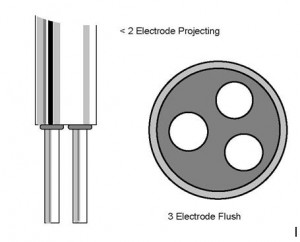Linear Polarisation Resistance Monitoring (LPR)
5. LINEAR POLARIZATION RESISTANCE (LPR) MONITORING
5.1 INTRODUCTION
The CORMON LPR measurement technique is based on the fundamental concept that when a test electrode in an aqueous environment is polarised by a small voltage, the apparent resistance measured from resulting current flow is inversely proportional to the corrosion rate. The CORMON Monitoring System makes use of conventional 2 and 3 electrode probes.
LPR monitoring is particularly applicable to the following areas:
Cooling Water Systems
Chemical Injection/Inhibitor Systems
Desalination Plants
Waste Water Systems
Oilfield Waterfloods
Chemical Cleaning
5.2 THEORY OF OPERATION
When a metal is immersed in a corrosive medium and allowed to undergo corrosion, it will assume a potential known as the free corrosion potential, Ecorr
If an additional voltage is applied to the metal to perturb it from its free corroding potential, a current will flow between the metal and corrodent. If the perturbation voltage (ΔE) is sufficiently small, the magnitude of the current flow (ΔI) will be proportional to the applied perturbation voltage, such that
ΔE = constant (1)
ΔI
The constant has the dimension of resistance and is known as the ‘Polarisation Resistance’ Rp.
ΔE = Rp (2)
ΔI
Thus, the Linear Polarisation Resistance technique derives its name from the fact that a linear relationship exists between the polarisation of a metal in contact with a corrodent and the current induced to flow by the application of the polarisation.
